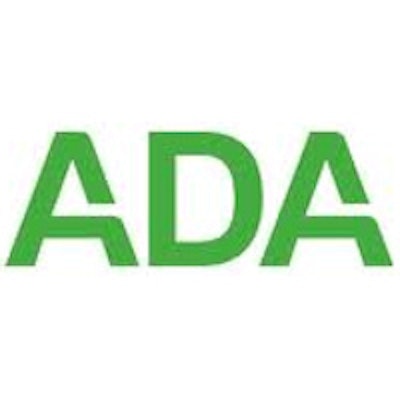
Dentists who graduated with higher debt were less likely to specialize and more likely to enter private practice than other primary occupations, according to the findings of a new survey in the Journal of the American Dental Association.
The authors found that dentists who responded reported an average of $214,000 in education debt at the time of completing dental school (the authors looked at four years of graduation: 1996, 2001, 2006, and 2011). Interestingly, about 90% of 1996 and 2001 respondents had debt from dental school compared with 95% of the 2006 and 2011 graduates (JADA, November 2015,Vol. 146:11, pp. 800-807).
"Contrary to what we hear a lot from the field, the research found no relationship between educational debt levels and the likelihood of owning a practice," stated co-author Marko Vujicic, PhD, chief economist and vice president of the ADA Health Policy Institute, in a press release that accompanied the study. "More significantly, in my view, we found that factors such as gender, race, and whether your parent is a dentist had much more significant impact on career choices than debt."
Debt and careers
The authors surveyed 1,842 practicing dentists who completed dental school between 1996 and 2011 to determine their initial education debt and a variety of specialization and practice decisions made during their careers. Demographic characteristics and parental income and education levels also were included in the survey questions.
Five career choices were examined in the study:
- Pursuing specialized training, such as endodontics, orthodontics, or periodontics
- Entering private practice
- Accepting a position with a government organization, such as the armed forces
- Working for a public health organization, such as a community clinic
- Accepting a position at a dental school as a faculty member
For dentists in private practice, the authors also asked the following three questions:
- Whether they owned their practice
- The percentage of their total patients who were covered by Medicaid or received charity care
- The number of hours worked
The median amount of initial debt increased over time in real dollars, from $148,000 for the 1996 graduates to $255,000 for the 2011 graduates (see table below).
| Education debt balance upon dental school graduation (in 2013 dollars) | |||
| Graduation year | No debt (%) | Median debt | Mean debt |
| 1996 | 11.3 | $148,000 | $164,000 |
| 2001 | 11.2 | $164,000 | $183,000 |
| 2006 | 6.0 | $213,000 | $223,000 |
| 2011 | 5.7 | $255,000 | $254,000 |
When they studied career choices, the authors reported that female dentists are 44% less likely to specialize and 17% less likely to go into private practice, while those who identified as Asian were 7.5% less likely to specialize and 17% less likely to go into private practice.
Those dentists who identified as black were the most likely to become faculty members or accept a government position, while those who identified as Hispanic were most likely to enter into a public health position (34% of respondents).
This survey backs up a May 2014 study in JADA that concluded that factors such as race and ethnicity -- rather than educational debt -- have a greater influence on dental students' job choices.
While the percentage of those who chose to pursue specialized training remained about the same, the percentage of those who entered private practice dropped (see table below). Interestingly, the class of 2011 is more than twice as likely to have patients who were covered by Medicaid or who received charity care than the 1996 class.
| Survey respondent characteristics | ||||
| Career and practice choices | 1996 | 2001 | 2006 | 2011 |
| Specialized | 19.1% | 17.1% | 19.0% | 18.5% |
| Private practice | 88.7% | 91.4% | 86.1% | 80.9% |
| Poor patients | 11.5% | 13.4% | 16.4% | 23.6% |
| Practice ownership | 81.2% | 71.7% | 53.8% | 10.1% |
| Average weeks worked/year | 47.6 | 47.4 | 46.1 | 38.0 |
| Average hours worked/week | 35.6 | 36.8 | 36.3 | 37.2 |
Policy implications
The survey findings suggest that policymakers "ought to explore a broader set of strategies if they are interested in influencing the career decisions of dentists" that included targeting education debt, the authors concluded.
"However, given the critical role that characteristics such as sex and race play in influencing career choices, policymakers also might explore a broader set of interventions that leverage the influence of these demographic factors," they wrote.



















